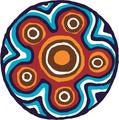Year 1 Term 4 Overviews

Dear Year 1 Families,
Welcome back to school for Term 4, the last term of Year 1! We are very proud of what students have achieved this year and we are excited to finish off the year.
Kaboom Kids Sports - 9th November from 10:10-11:20 am
ACFGI Stay Late- 9th November from 4:30-7:00 pm
BDEHJ Stay Late - 16th November from 4:30-7:00 pm
Reading
In reading, students will understand and discuss how characters are feeling in a text as well as finding the connections between illustrations and the words to infer how a character's feelings change throughout the text. Students will summarise fiction texts using the structure of Somebody, Wanted, But, So and Then and recall what has happened so far in the text. Within non-fiction, students will be able to name the different parts of non-fiction texts and how they can be organised (e.g. chronological, descriptive or question and answer). This will be explored through procedural texts (recipes, how to, how things are made) and topics with sequences such as life cycles. Students will understand what a contraction is, such as we’ll (we will), it’s (it is) etc. as well as read and recognise them while reading.
Writing
In writing, students will focus on creating procedural texts and narratives. Procedural texts will be driven by writing experiences, such as making popcorn, followed by students writing texts using correct structure and an expanded vocabulary of new verbs and adverbs. In our narratives unit, mentor texts will be explored to support development of ideas, word choice, sentence fluency and organisation. Throughout the term, students will explore different ideas for writing, craft well built sentences and identify how sentences are sequenced. They will be adventurous in using vocabulary such as adverbs, actions verbs, adjectives and nouns to help readers visualise the characters, setting and the events in their narrative. Each week, students will engage in SMART Spelling and phonics to help improve their understanding of spelling patterns.
Numeracy
In numeracy this term, students will consolidate their understanding of 2D shapes and 3D objects and identify the features of these shapes. They will also be revisiting key ideas around location and using language of distance and direction to move from place to place. Year 1s will continue to develop their understanding of telling the time to the half hour. Students will be learning how to order Australian coins according to their value and describing the coins’ appearance (shape, size, colour). Students will then explore chance through looking at everyday events and describing them using everyday language such as ‘will happen’, ‘won't happen’ and ‘might happen’. They will continue to develop their knowledge of fractions and halves and recognising one-half as one of two equal parts of a whole. Later in the term, students will be learning how to order Australian coins according to their value and describing the coins’ appearance (shape, size, colour). There will be a continual focus on place value, as well as being able to skip count by 2s, 5s, and 10s and using that to help them count collections efficiently.
Social Emotional Learning
In SEL (social emotional learning), students will be describing how they contribute to group tasks and understanding how this looks different between individuals. Students will explore how they all have their own unique strengths and will be learning behaviours that help with being in a team. Students will also be exploring similarities and differences in their point of views and understanding that people have different beliefs. Students will further develop skills to be able to respect and work alongside different opinions successfully. Finally, they will be investigating different ways of showing they are ready to learn by inquiring into different scales, mindfulness exercises and engagement activities for students to educate themselves on what works for them to use in the future.
Inquiry
In inquiry, students will be investigating the question: ‘How has daily life changed or remained the same over time?’ Students will be exploring schools in the past and look at how they are the same or different to our schools now. Students will be inquiring into a variety of toys and games that have been used over time. We will be discussing the similarities and differences that we notice. They will also explore how technology has changed over time and how technology helps our daily lives. Students will select a way to present their findings and share this with their class.
